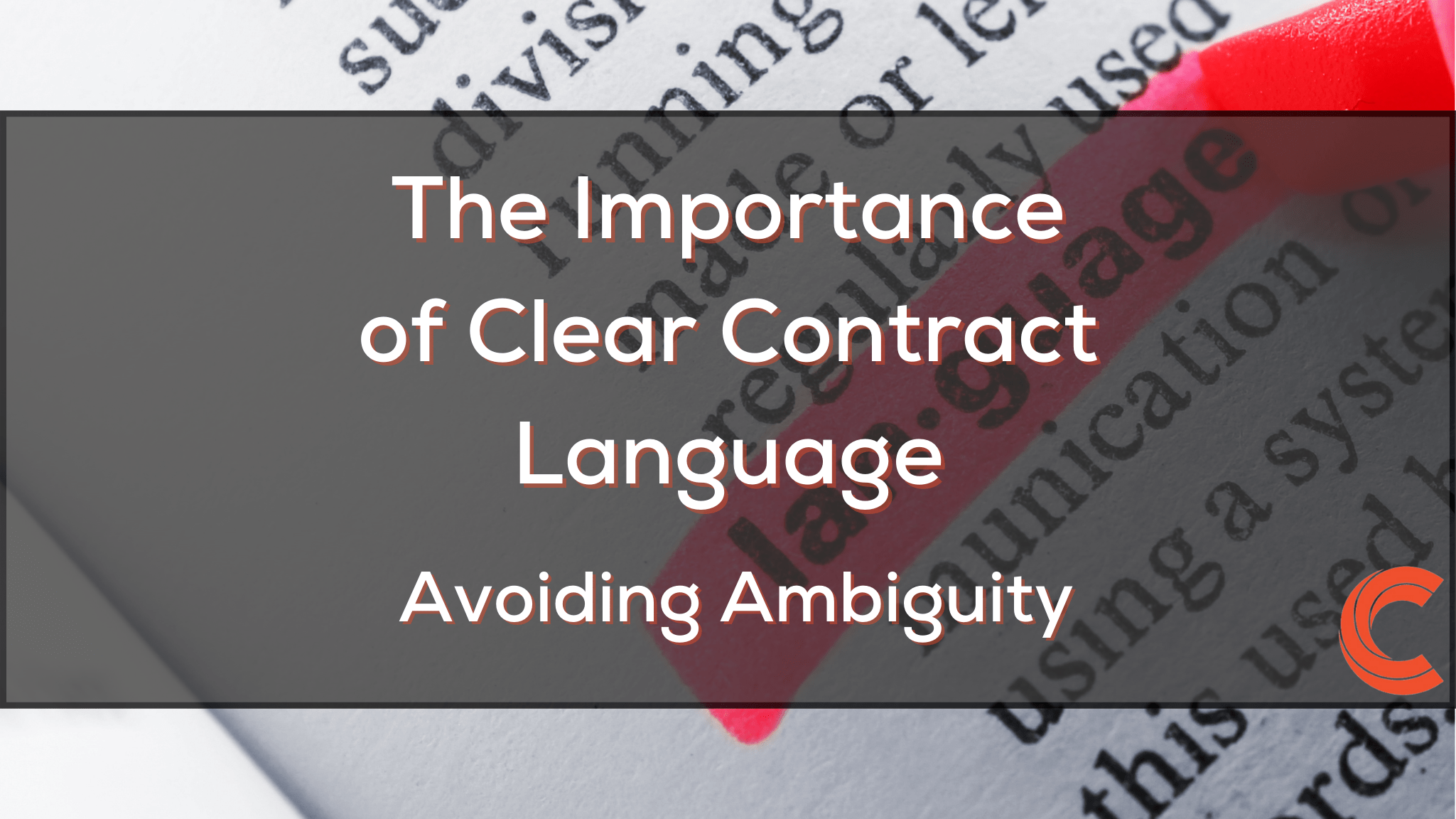Contracts serve as the foundation of business relationships, outlining the terms, conditions, and expectations that govern transactions. While the necessity of contracts is unquestionable, the quality of the language used within them is often overlooked. Clear and concise contract language is not just a matter of good practice; it is a crucial component of effective risk management and can play a pivotal role in preventing disputes and legal challenges down the road.
1. The Pitfalls of Ambiguous Contracts
Ambiguity in contracts is like a ticking time bomb, waiting to explode when least expected. Ambiguous language leaves room for interpretation, paving the way for misunderstandings and conflicts. When parties involved have different interpretations of contract terms, disputes are almost inevitable. The ambiguity can extend to various aspects of a contract, including payment terms, delivery schedules, and performance expectations.
2. Legal Consequences of Ambiguity in Contracts
Ambiguous contracts often lead to protracted legal battles, consuming time, money, and resources that could be better invested elsewhere. In a legal setting, courts are tasked with interpreting contract language to discern the parties’ intentions. However, if the language is ambiguous, the court may be forced to resort to extrinsic evidence, such as witness testimonies and prior negotiations. This not only complicates the legal process but also opens the door to unpredictable outcomes.
3. Impact on Business Relationships
Clear communication is the bedrock of any successful relationship, and business partnerships are no exception. When contractual language is ambiguous, it introduces an element of mistrust and uncertainty. Parties may find themselves questioning each other’s motives and intentions, eroding the foundation of the relationship. The strain caused by ambiguity can extend beyond the specific contractual issue, affecting the overall rapport between parties.
4. Preventing Misunderstandings through Contracts
Clear contract language acts as a preventive measure against misunderstandings. It leaves no room for misinterpretation, ensuring that all parties involved have a shared understanding of their rights and obligations. This clarity is particularly crucial in complex transactions where multiple terms and conditions come into play.
5. Contract Drafting Tips for Clarity
To ensure clear contract language, consider the following drafting tips:
a. Define Terms Clearly:
Define terms with precision to eliminate any potential for confusion. Clearly outline the meaning of key terms and phrases to leave no room for interpretation.
b. Avoid Legalese:
While legal terminology has its place, contracts should be drafted in a language that is easily understandable by all parties involved. Avoid unnecessary jargon that could lead to confusion.
c. Be Specific:
Provide specific details regarding obligations, deliverables, and timelines. Vague statements like “as soon as possible” should be replaced with concrete timeframes to avoid disputes.
d. Anticipate Contingencies:
Consider potential issues that may arise and address them in the contract. Anticipating contingencies can help in crafting language that covers a range of scenarios, reducing the likelihood of disputes.
6. The Role of Legal Professionals
Engaging legal professionals, such as those at Carbon Law Group, can be instrumental in ensuring the clarity and effectiveness of contracts. Experienced attorneys understand the potential pitfalls of ambiguous language and are adept at crafting contracts that leave no room for misinterpretation.
7. Conclusion
In the realm of contracts, clarity is not just a virtue; it is a necessity. The importance of clear contract language cannot be overstated, as it serves as a safeguard against legal battles, preserves business relationships, and fosters a culture of transparency. As businesses navigate the complexities of transactions, investing in the clarity of contract language is an investment in the longevity and success of the enterprise.
For legal assistance in crafting clear and effective contracts, contact Carbon Law Group today.





